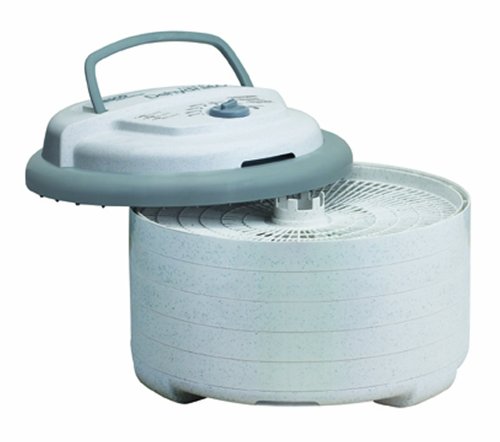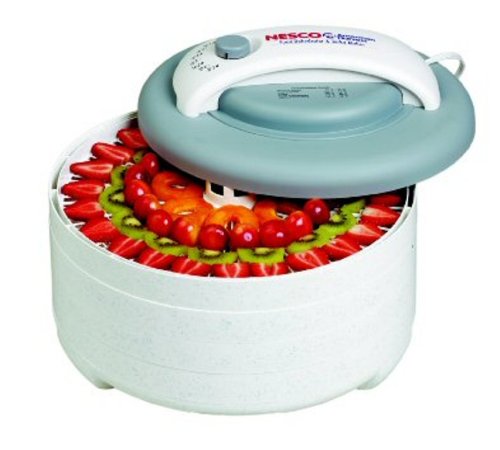
Colon Health by Dr. Norman Walker Features & SpecificationsColon Health by Dr. Norman Walker Book DescriptionColon Health will take this forgotten part of your body and focus your full attention on it--and you'll never again take it for granted. This book shows how every organ, gland, and cell in the body is affected by the condition of the large intestine.About the AuthorDr. Norman Walker is the longest-lived, widely-known raw-foodist of the modern era. Thousands upon thousands of people credit Dr. Walker's live-vegetable-juice therapy for healing them of "incurable" diseases, including Jay Kordich, known to the world as "The Juiceman." When Jay Kordich had cancer, he met and was tremendously inspired by Dr. Walker. After healing himself of cancer through The Raw-Food Diet and juice therapy, Jay worked with Dr. Walker beginning in the 1940s up until Dr. Walker's death in the mid-80's at an age of well over 100.For more than 100 years, Norman W. Walker, Ph.D., proved through research and experience that well-being and long life go hand-in-hand. Through the non-stop activities of raw-food enthusiasts, such as Nature's First Law, modern day nutritionists and medical researchers are finally discovering the raw truths which Dr. Walker knew and taught throughout the twentieth century. Dr. Walker was living proof that a longer, healthier, more enjoyable life is achieved through The Raw-Food Diet, mental poise, and intelligent body care. Dr. Walker's contributions to the common heritage of humankind began before the turn of the century in London, where as a young man he became seriously ill due to over-work and stress. Unable to accept a sentence of ill-health and early death, Dr. Walker healed himself with living foods and vegetable juices. Among Dr. Walker's greatest contributions was his discovery of the therapeutic value of fresh vegetable juices and in 1930, the development of what would become known as the Norwalk Press Juicer. The present "juicing" craze is direct
Essential oils are highly concentrated aromatic oils derived from plants, widely used in aromatherapy for their medicinal and mood-enhancing effects. Some essential oils also have culinary uses, however, and these powerful plant essences can be used to rejuvenate, or in place of, dried herbs and spices, which can lose aroma and flavor over time.
A number of essential oils have been designated as Generally Regarded As Safe [GRAS] to use as food additives by the US Food and Drug Administration. These include those listed below.
- Basil ......Ocimum basilicum L.
- Bergamot (bergamot orange) .......... Citrus aurantium L. subsp. Bergamia Wright et Arn.
- Bitter almond (free from prussic acid) .........Prunus amygdalus Batsch, Prunus armeniaca L. or Prunus persica (L.)
- Cinnamon bark, ............Ceylon Cinnamomum zeylanicum Nees.
- Coriander ...........Coriandrum sativum L.
- Cumin .............Cuminum cyminum L.
- Ginger ............Zingiber officinale Rosc.
- Grapefruit ..........Citrus paradisi Macf.
- Laurel leaves (Bay) ..........Laurus spp.
- Lavender ...........Lavandula officinalis Chaix.
- Lemon Citrus ..........limon (L.) Burm. f.
- Lime Citrus ...............aurantifolia Swingle.
- Mandarin Citrus ...........reticulata Blanco.
- Marjoram, sweet.............. Majorana hortensis Moench.
- Nutmeg ...........Myristica fragrans Houtt. Origanum Origanum spp.
- Parsley ............Petroselinum crispum (Mill.) Mansf.
- Pepper, ...........black Piper nigrum L.
- Sage ............Salvia officinalis L.
- Rosemary .............Rosmarinus officinalis L.
- Thyme ................Thymus vulgaris L. and Thymus zygis var. gracilis
Boiss.
When using essential oils in your cooking, it is important that they are 100% pure and of therapeutic grade. Essential oils are highly concentrated and, consequently, very potent, and so should also be used sparingly. The recipes below give suggested amounts, but probably the best way to establish what suits your taste is through trial and error.
Here are just a few simple ideas that you could try. Like herbs and spices, different essential oils provide good accompaniments to different ingredients. Generally, essential oils that go well with poultry include basil, dill, fennel, lemon, marjoram, mellisa, orange, oregano, parsley, rosemary, sage, tarragon and thyme. For red meat, try basil, clove, dill, fennel, marjoram, mellisa, oregano, parsley, rosemary, sage, tarragon and/or thyme. Essential oils that go well with fish or seafood include black pepper, fennel, lavender, lemon, lime, orange, parsley, rosemary, sage and thyme.
Meat
When cooking joints of red meat, simply add 1 drop of essential oil to a vegetable oil and brush over the meat before cooking. Essential oils can also be added to the cooking oil when browning mince meat (lamb or beef) - use 1 drop per half-kilo of meat.
For chicken, add 2 drops each of lemon and orange essential oils to 4 tablespoons of honey and 1 dessert spoon of mustard. Make a paste and brush over the chicken before grilling or baking.
Fish
Add 1 drop of essential oil to 1 tablespoon of vegetable oil. Brush over white fish steaks and grill.
Vegetables
Try stir-frying your vegetables in an essential oil (diluted 1 drop to 1 tablespoon of olive oil). Cardamon, cumin, nutmeg and ginger are good choices.
Steaming your vegetables over water containing an essential oil can also be interesting - try nutmeg and lemon for greens.
Dishes that don't require cooking
Of course, some recipes don't need 'cooking', and essential oils are ideal for this kind of thing.
Marinades
Essential oils are ideal for making marinades - simply add a few drops of your selected essential oil(s) to honey or olive oil and brush on the meat. Place oiled red meat in a bowl containing red wine, 2 cloves of garlic, 1 chopped onion and 1 drop of orange essential oil. Season and leave for up to 8 hours.
Salad dressings
Essential oils also make great salad dressings. Add 1 drop of your chosen essential oil to 10 ml of vegetable oil and/or vinegar. Basil, clove, lavender, lemon, lime, rosemary, sage and thyme are good choices for salad dressings.
Herb butter
Add 1 drop of the essential oil of your choice to 1 cube of softened butter. Mix gently and add to potatoes, other vegetables, toast...
Drinks
Citrussy oils (e.g. grapefruit, lime, lemon, mandarin, orange and tangerine) and minty oils (e.g. peppermint, spearmint and mint) can add zest to drinks of all kinds. Try adding one or two drops of a selection of essential oils to water for a simple thirst quencher.
Herbal teas: add a few drops of essential oils to boiling water: some to try are lavender, roman chamomile, peppermint, orange, tangerine and lemon.
Mulled wine: add 2 drops each of mandarin and orange essential oils and 1 drop each of clove and cinnamon to 2 tablespoons of honey. Heat 1 litre of red wine slowly, add the flavoured honey and stir. Take off the heat just before the wine starts to bubble. Serve with slices of orange and lemon.
This short article gives just a flavour (sorry!) of the uses that essential oils can be put to in the kitchen. Many more recipes are available in books and on the internet, so why not start searching now and explore the taste explosion that essential oils can provide.
Sources:
electricscotland.com/food/donna/recipe12.html
aroma-essence.com/cooking.html
zhealthinfo.com/recipes1.htm http://www.cfsan.fda.gov/~lrd/fcf182.html
Worwood VA. The Fragrant Pharmacy. A complete guide to aromatherapy & essential oils. Bantam Books, 1996
Alix Williams is a regular contributor to the holistic website Aroma4u.co.uk a home based UK business providing Eco-friendly hand made Aromatherapy Stress Relieving Gifts.
Alix Williams also writes about using unique Essential Oil Gift Ideas for Stress Relief.
For more information regarding Stress related matters (stress in the Workplace), Stress Busting Gift ideas with pure Essential oils, please visit: http://www.aroma4u.co.uk
copyright 2008 Alix Williams (CUS Busting Ltd)
dehydrator
 The NESCO Professional Food & Jerky Dehydrator has more power than most dehydrators -- 700 watts -- which means faster drying time. You will have results in hours, not days. The top mounted fan with patented Converga-Flow action pressurizes air downward through the outer ring and horizontally across each individual tray, converging at the center, for fast, even drying. No need to rotate trays. The adjustable thermostat allows you to dry different foods at proper temperatures (95-155 F), providing the flexibility to produce the best drying results. As your needs grow, the Professional Food & Jerky Dehydrator can be expanded up to 12 trays.
The NESCO Professional Food & Jerky Dehydrator has more power than most dehydrators -- 700 watts -- which means faster drying time. You will have results in hours, not days. The top mounted fan with patented Converga-Flow action pressurizes air downward through the outer ring and horizontally across each individual tray, converging at the center, for fast, even drying. No need to rotate trays. The adjustable thermostat allows you to dry different foods at proper temperatures (95-155 F), providing the flexibility to produce the best drying results. As your needs grow, the Professional Food & Jerky Dehydrator can be expanded up to 12 trays.

